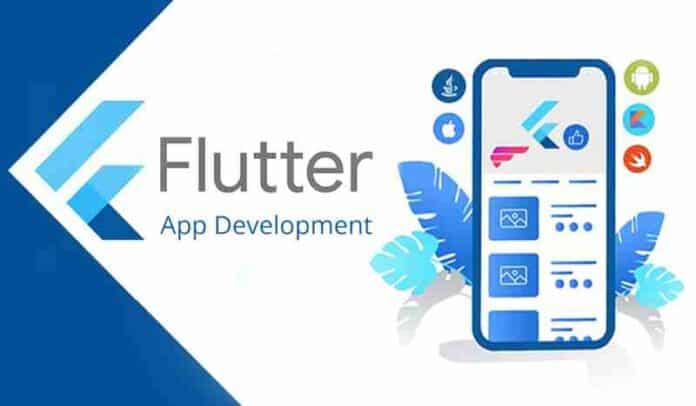
Since the launch of Fixed Version 1.0, Flutter has started winning the hearts of developers worldwide. As an ambitious and robust mobile application development SDK by Google, Flutter enables developers to target iOS and Android platforms simultaneously with a single code. What makes Flutter more attractive is the fact that it can create apps compatible with Google’s upcoming fuchsia operating system.
These days, the mobile app market is leaning towards a powerful user experience-driven application development process. One of the biggest hurdles is its split into iOS and Android app development. Users of both these operating systems are spread all over the world.
Therefore, entrepreneurs cannot avoid them when targeting a wide audience. If you leave out any OS, the brand experience may be adversely affected.
Flutter application development is considered to be the solution to this problem. Flutter app developers can use it to create cross-platform apps. This post provides a step-by-step guide to using Flutter to develop a mobile application. Hopefully, this comprehensive guide will shed more light on the development of flutter applications and make an informed decision to hire a dedicated Flutter app developer from India. Let’s start with a brief introduction to this wonderful framework.
What is a flutter?
Flutter is Google’s open-source technology for creating mobile, desktop, and web apps with a similar codebase. Unlike other popular solutions, Flutter is not a framework or a library; It is a complete SDK – software development kit. Let’s summarize it here to ensure we’re on the same page.
A library is a reusable piece of code you put into your application to perform a specific general function. It is a framework that provides you with a skeleton architecture for creating software. It is a set of tools that serve as the foundation for your application, giving you the tools, you need to complete the entire structure and fill in the blanks with your code to achieve the functionality you need.
The SDK’s scope is wide as it is a collection of tools, including libraries, documentation, APIs, sometimes frameworks, and more, providing you with everything you need for software development. And it’s the same with Flutter – it already contains everything you need to create cross-platform applications.
- Flutter SDK
Since Flutter is a complete SDK, Flutter application development includes a rendering engine, ready widgets, testing and integration API, etc. Let’s talk about the main components and how they work in general.
- Flutter architecture
There are three main architectural levels.
- An embedder: It uses platform-specific language and runs applications on any OS.
- An engine: It is written in C or C ++, which provides a low-level implementation of Flutter’s Core API. These include graphics (via the Skia 2D graphics library), text layout, file and network I/O, accessibility support, plugin architecture, and dart runtime and compile toolchain; And
- A framework: It is based on the DART programming language. Implementation is optional, but it provides a rich set of libraries that can be divided into layers: Basic Classes, Rendering Level, Widget Level, and Content / Cupertino Libraries.
Now, the details. First, the language under the base of the Flutter is a dart. It is a client-optimized, object-oriented programming language developed by Google. Dart can compile in native code for mobile and desktop as well as JavaScript. The great thing about it is that because of this direct integration. It does not need additional bridges to communicate with the platform, for example, React Native. This greatly improves start-up time and overall application performance and reduced cost to develop an app.
Top Flutter features as a cross-platform application development framework
- Open-source platform
Flutter is an open-source platform developed and supported by Google. You can turn your creative app idea into a perfect solution cost-effectively with the help of a trusted flutter app development company.
Built-in Material Design (for Android apps), Rich Motion API, and Cupertino Widgets (for iOS apps) are useful for creating elegant and user-friendly apps. In addition, Flutter developers can freely explore various design options when creating customized apps using Flutter.
- Reload hot
This feature gives the Flutter an edge over other peer. It enables developers to experiment quickly and easily. They can create user-friendly UIs, add essential components to the app, and debug apps via hot reload as it quickly reflects changes. It also reflects updates to the app’s ongoing development phase and allows developers to complete projects on time.
- Rich widget
The main idea of the flutter platform is based on widgets. Developers can create a beautiful and expressive UI by combining different devices tailored to the client’s business model. The framework has rich widgets for structural elements, stylistic elements, etc. Flutter app developers can also create custom widgets and rest assured about the native performance of the application.
- Flutter Application Development Widget
Widgets play an important role not only in design but also in the functionality of cross-platform applications. Mobile app development can enable entrepreneurs to develop apps that integrate seamlessly with seamless scrolling and navigation.
- Single codebase
When it comes to developing apps for both Android OS and iOS, Flutter is an ideal choice because it requires a codebase to create cross-platform apps with a native experience. Hire a dedicated web & mobile app developers, who can create a flutter app that can perform like a native app in features, UX, and functionality.
- Google Firebase support
The Flutter framework enables developers to make the most of Google’s Firebase support as a backend. Developers can use this support to develop scalable apps.
Advantages of Flutter development
How to go about the top benefits of flutter application development from the point of view of developers and entrepreneurs?
A. Fast application development
Excellent and innovative features, including Hot Reload and Single Codebase for Android and iOS platforms, can enable developers to create a feature-rich flutter app in less time. Flutter’s in-built features can be easily integrated with Android and iOS to give the app a local-like performance while saving valuable time for developers.
B. Single codebase for both platforms
Whether an Android app or an iOS app, Flutter allows developers to build a robust enterprise-grade app using a single code base. It saves developers time on code management as developers do not need to write separate code for both platforms.
C. Expressed interface
An attractive and user-friendly UI can attract many people to the application. Flutter helps developers develop separate widgets for Material Design and Cupertino, with a graphic interface, fully customizable devices, rich Motion API, and easy natural scrolling. Developers can also reuse the code if needed in the future.
D. Quick debug
The ‘Hot Reload’ feature helps developers to code faster than native app development. This feature enables developers to quickly test the code and check for changes in the application while creating an awesome application. Testing and debugging of the app are fast with the hot reload feature.
E. Easy learning curve
Flutter is based on Dart, an object-oriented programming language that is easy for developers to understand. Developers have skills in Swift or Java. They can easily learn Flutter and build an app from scratch. All developers need to register on the official site of Flutter to start setup and creating the first flutter application.
F. Community support
This is the biggest advantage of Flutter. A rich community of active developers can help developers solve their problems quickly, saving them time and effort. In addition, Google supports and maintains Flutter, making the platform extremely reliable. It’s easy to discuss new features and dispel doubts about the Flutter as the community continues to organize meetups and other events worldwide.
Final thoughts
Flutter app enables development companies to find versatile solutions while solving many common problems. Start-ups and SMEs can take advantage of opportunities with customized and feature-rich apps that run smoothly on Apple and Android devices.
On the one hand, small companies rely on Flutter for big savings in development time and cost. On the other hand, large companies choose Flutter because it enables them to eliminate the decentralized team of developers. It is no exaggeration to say that Flutter can be considered the future of mobile app development.
